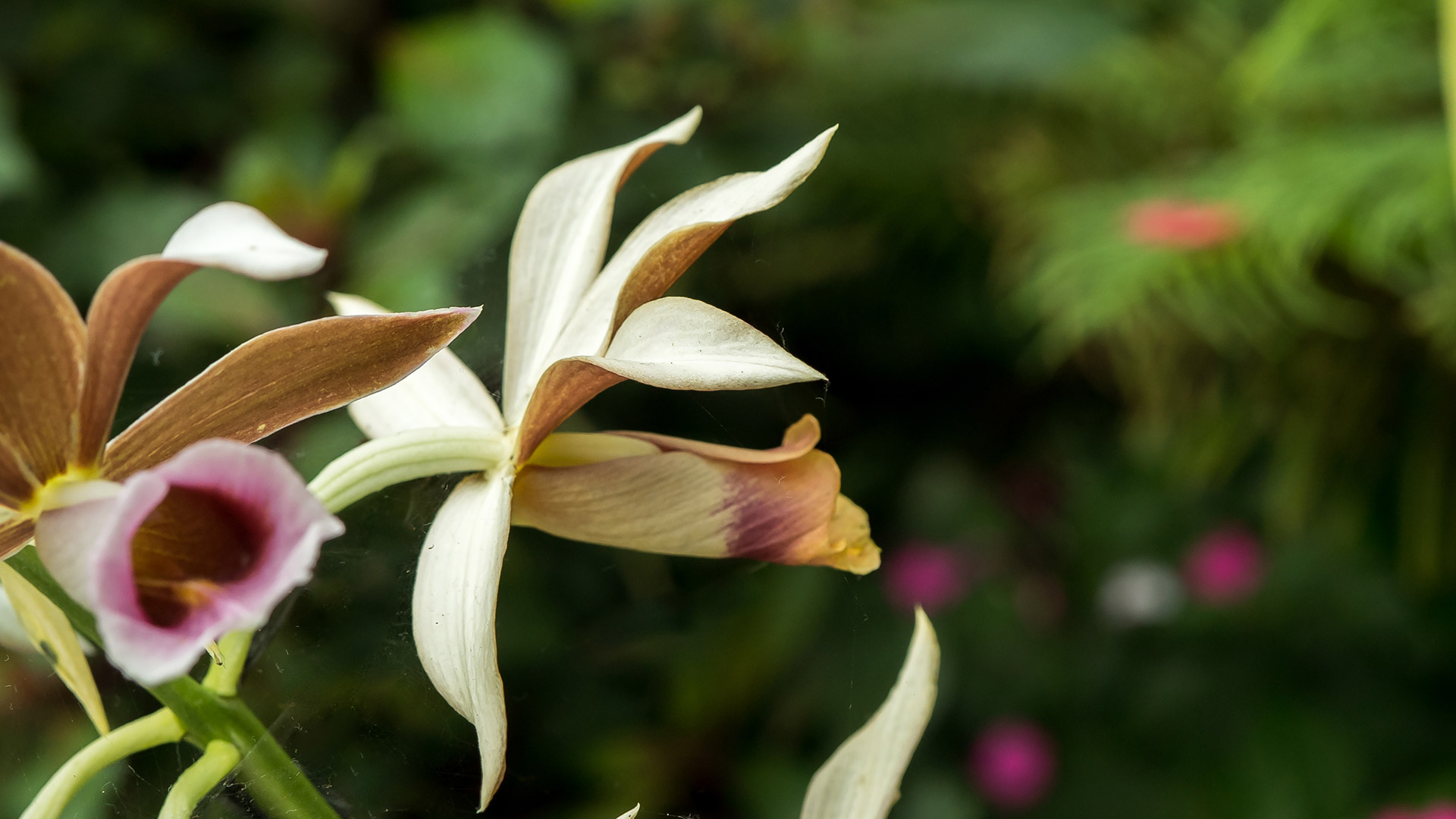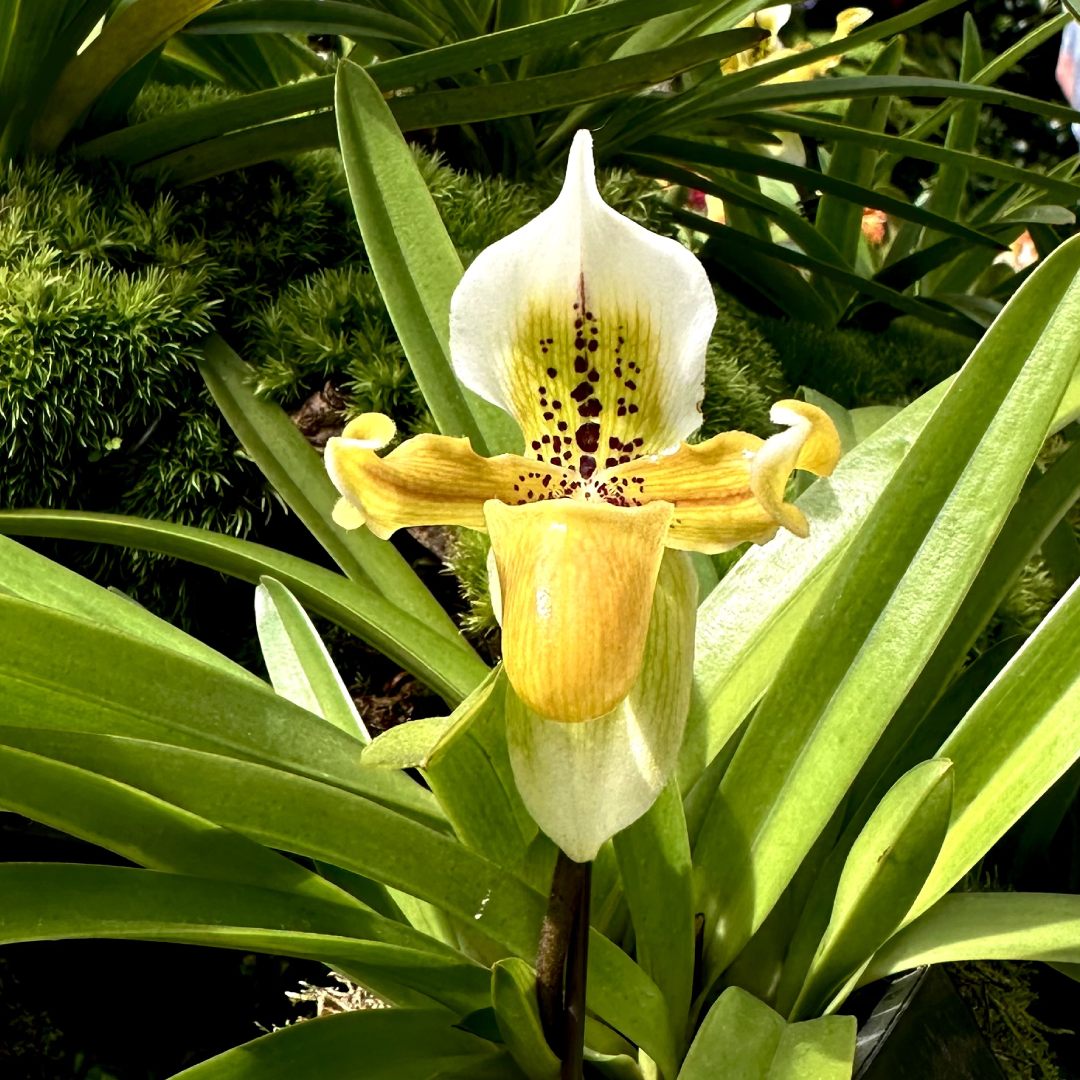Hydrangea (Hydrangea cv.)
Boasting more than seventy species, members of the Hydrangea genus show dramatic variation in their displays of floral colour and form. From the snow white, pink or blue mopheads of Hydrangea macrophylla to the conical, sometimes pendulous clusters of the Hydrangea paniculata, their unique characteristics never cease to surprise and delight floral enthusiasts.
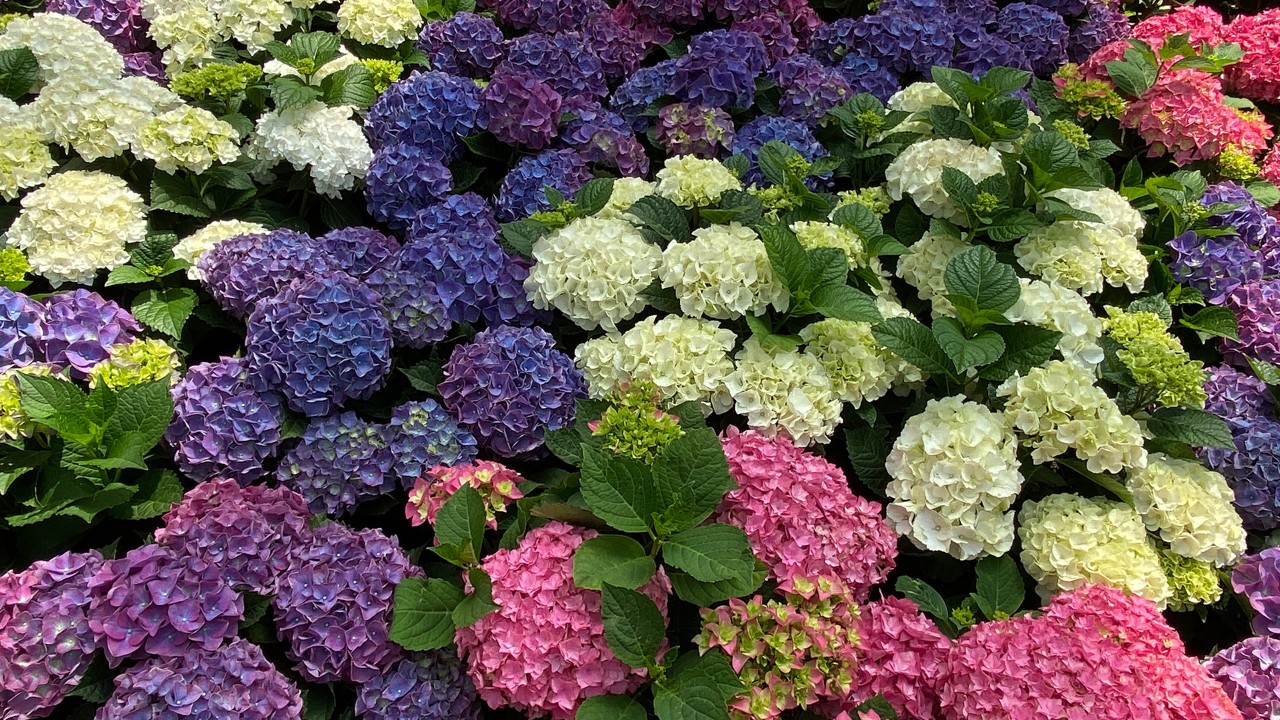 Bright, vivid colours of hydrangea cultivars.
Bright, vivid colours of hydrangea cultivars.
Hydrangea is one of the most popular ornamental plants for their large, colourful flowerheads, with Hydrangea macrophylla being by far the most widely grown Hydrangea species worldwide, with over 600 named cultivars. Many are selected and bred to have only large sterile flowers in the flowerheads in an assortment of colours. Hydrangea macrophylla, also known as bigleaf hydrangea, is native to Japan and has two different floral types: mophead and lacecap. Mophead hydrangeas are the most well-recognized type with globe-shaped flower clusters and are one of the most widely used forms in the Hydrangea Holidays display.
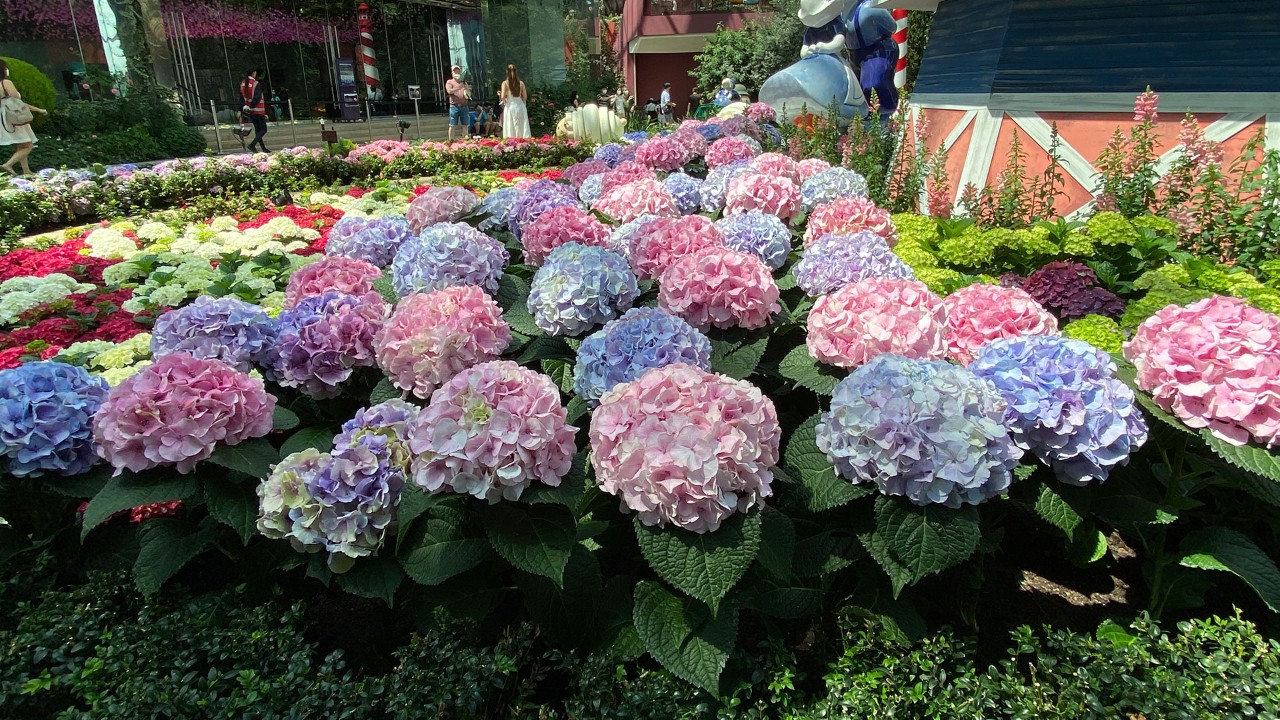 Large, mophead hydrangeas in pastel colours.
Large, mophead hydrangeas in pastel colours.
The flowers of Hydrangea are carried in clusters, with each tiny, individual hydrangea flower being enhanced by the display of colour from a ring of modified sepals surrounding it. Hydrangea flowers consist of two different types of florets: fertile and sterile.
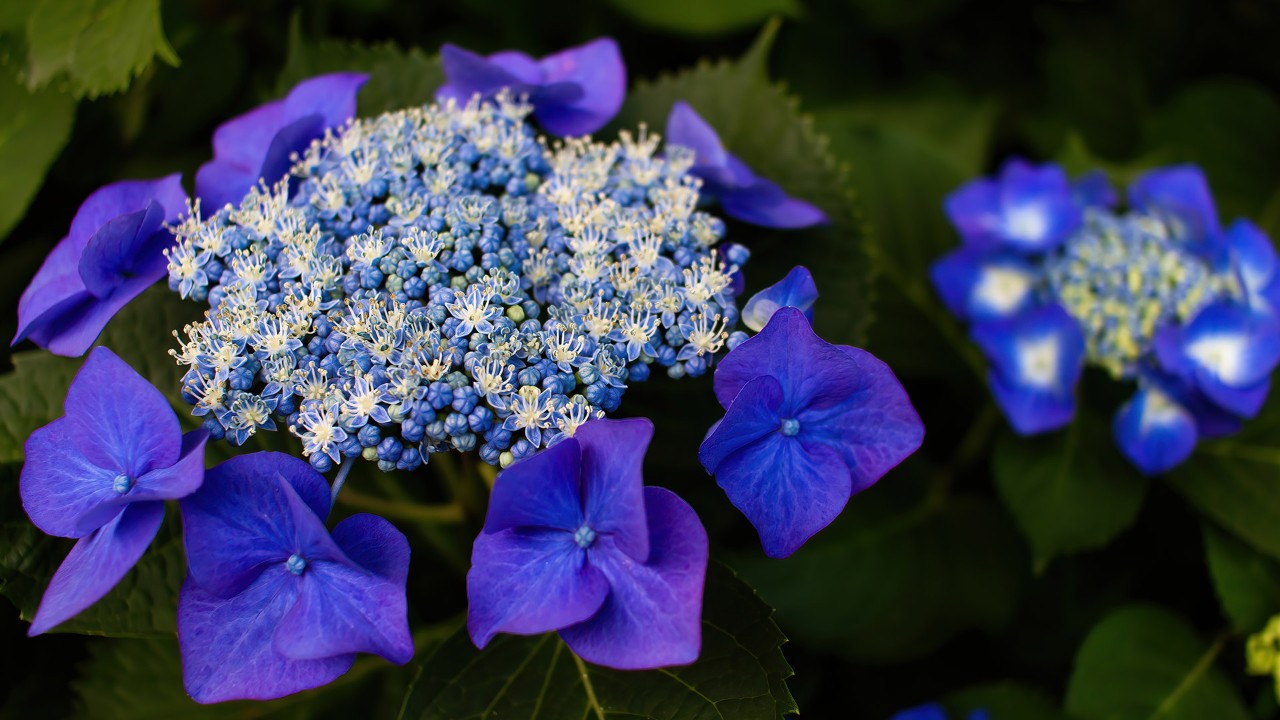 This lace cap hydrangea shows the typical floral arrangement of its type, with a ring of showy fertile florets surrounding central bunches of tiny fertile florets. Sterile florets are all about appearance being large, colourful, and designed to catch the eye of pollinators. On the contrary, fertile florets are smaller and not showy but loaded with pollen and nectar. Some of the fertile florets are in full bloom - can you spot the tiny purple sepals and cream-colored stamens
This lace cap hydrangea shows the typical floral arrangement of its type, with a ring of showy fertile florets surrounding central bunches of tiny fertile florets. Sterile florets are all about appearance being large, colourful, and designed to catch the eye of pollinators. On the contrary, fertile florets are smaller and not showy but loaded with pollen and nectar. Some of the fertile florets are in full bloom - can you spot the tiny purple sepals and cream-colored stamens
Because many ornamental cultivars have mostly showy sterile florets and very few, if any, fertile florets, they vary in their ability to provide bees with pollen and nectar. Unfortunately, the very common mophead hydrangea types are packed full of sterile florets, blocking the few fertile florets from pollinators, hence they are not pollinator-friendly as lacecap hydrangeas, which have their fertile florets exposed for pollinators’ easy access.
Most people assume that the colour of a flower is largely determined by the genetics of the plant, but hydrangea is unique in that the colour of its sterile bracts can change depending on the pH of the soil in which they are planted. Most bigleaf hydrangeas (Hydrangea macrophylla) have developed this sensitivity over the centuries.
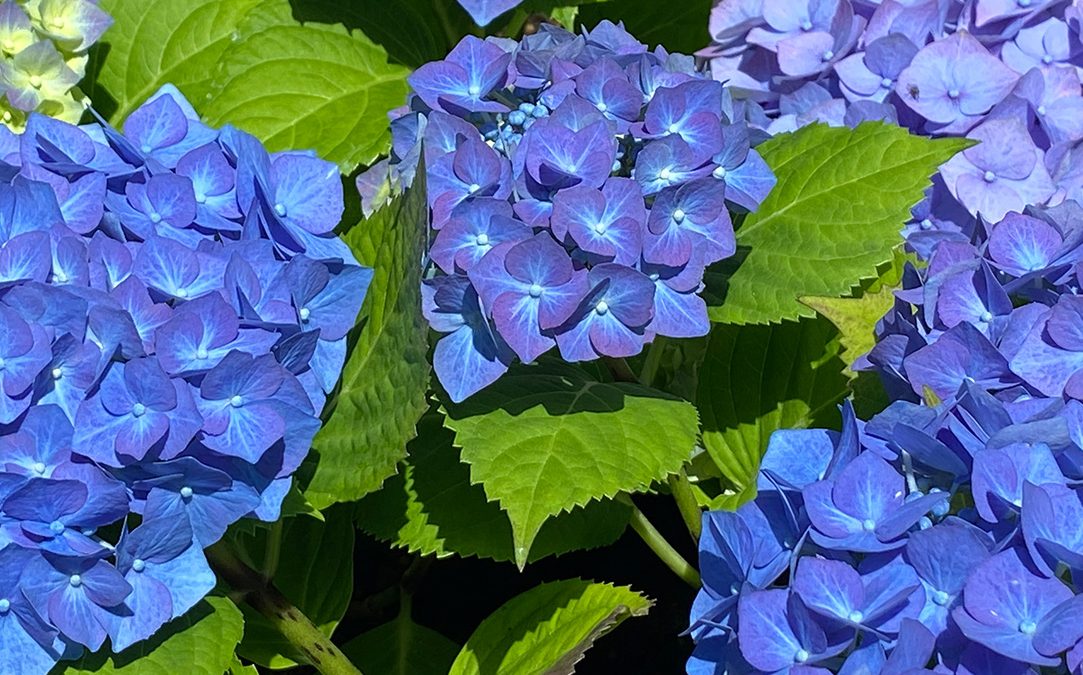 Blue and purplish-pink coloured hydrangea blooms
Blue and purplish-pink coloured hydrangea blooms
Colour variation in bigleaf hydrangeas can vary due to changes in the availability of aluminium compounds depending on soil pH. In acidic soil (pH 5.5 or lower), aluminium is soluble and available to the plant. It is taken up from the roots and binds to anthocyanin pigments in the flowers resulting in a blue colour. In neutral to slightly acidic soil, less aluminium is available to bind to and produce blueish pigments in the flowers, so these hydrangeas can have purple blooms, or even a mixture of pink and blue blooms on the same plant. In alkaline soil (with a pH above 7), aluminium is insoluble and unavailable to be taken up by the roots, bigleaf hydrangea flowers will be pink or red. There are exceptions – hydrangeas with white blossoms will always bloom in white, regardless of the soil pH – and the flower colour is fixed in many modern cultivars which remain the same colour in all but in the most extreme soil pH conditions. Hydrangea growers may also add finely ground minerals, such as calcium carbonate and aluminium sulphate into the soil mix to promote pink and blue blooms, respectively.
The name hydrangea is derived from the ancient Greek words hydor meaning ‘water’ and angeion meaning ‘a container’. Some believe that the name is an indication of the plants’ thirsty tendencies and love of moist ground. However, the most widely accepted theory on the origin of the hydrangea name is that the flower buds look the same shape as an ancient Greek vessel that was used to carry water.
As quoted from Aristotle “Adventure is worthwhile”, so enjoy the thousands of hydrangeas from over 20 cultivars in the vast flower field at Flower Dome in our brand new Hydrangea Holidays display!
Written by: Ziana Yacob, Senior Manager (Research and Horticulture)
Ziana's fascination with the many wonders of plants led her to study Horticulture. She has been involved in propagating and nurturing in-house plant collections, with a special focus on orchids. Keeping plants thriving is both a rewarding challenge and a continuous journey of learning for her!
